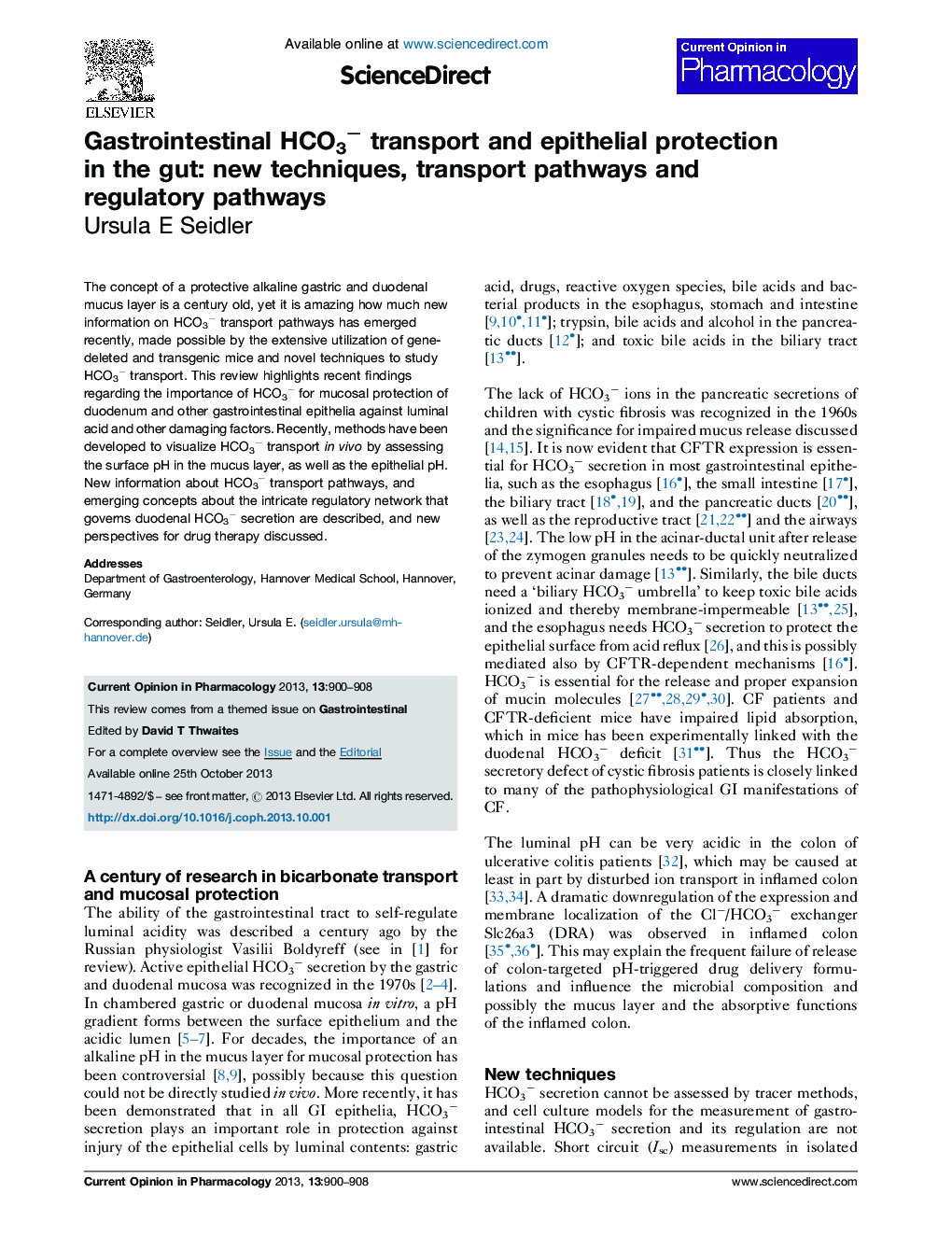| Article ID | Journal | Published Year | Pages | File Type |
|---|---|---|---|---|
| 5826237 | Current Opinion in Pharmacology | 2013 | 9 Pages |
Abstract
The concept of a protective alkaline gastric and duodenal mucus layer is a century old, yet it is amazing how much new information on HCO3â transport pathways has emerged recently, made possible by the extensive utilization of gene-deleted and transgenic mice and novel techniques to study HCO3â transport. This review highlights recent findings regarding the importance of HCO3â for mucosal protection of duodenum and other gastrointestinal epithelia against luminal acid and other damaging factors. Recently, methods have been developed to visualize HCO3â transport in vivo by assessing the surface pH in the mucus layer, as well as the epithelial pH. New information about HCO3â transport pathways, and emerging concepts about the intricate regulatory network that governs duodenal HCO3â secretion are described, and new perspectives for drug therapy discussed.
Related Topics
Life Sciences
Neuroscience
Cellular and Molecular Neuroscience
Authors
Ursula E. Seidler,
